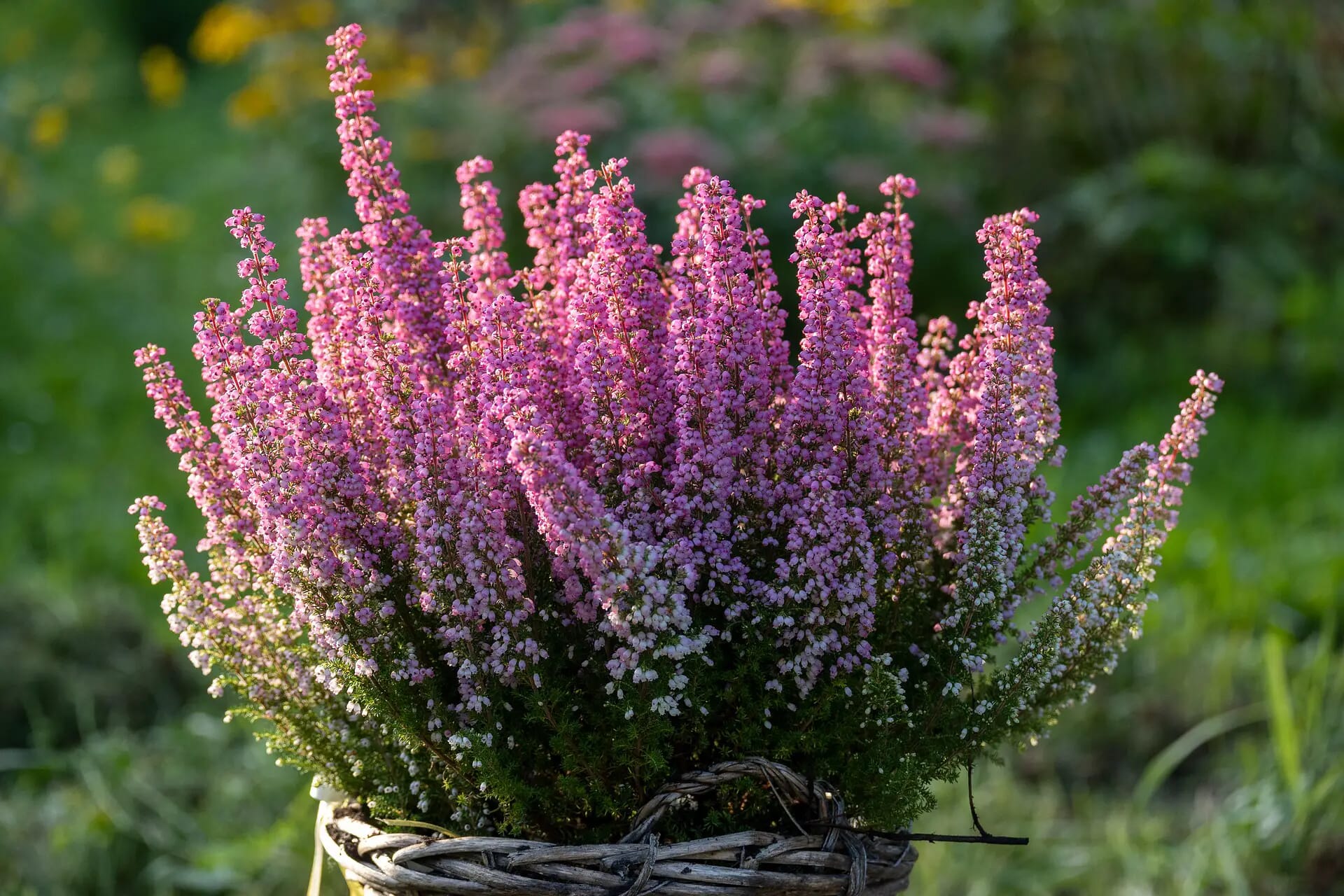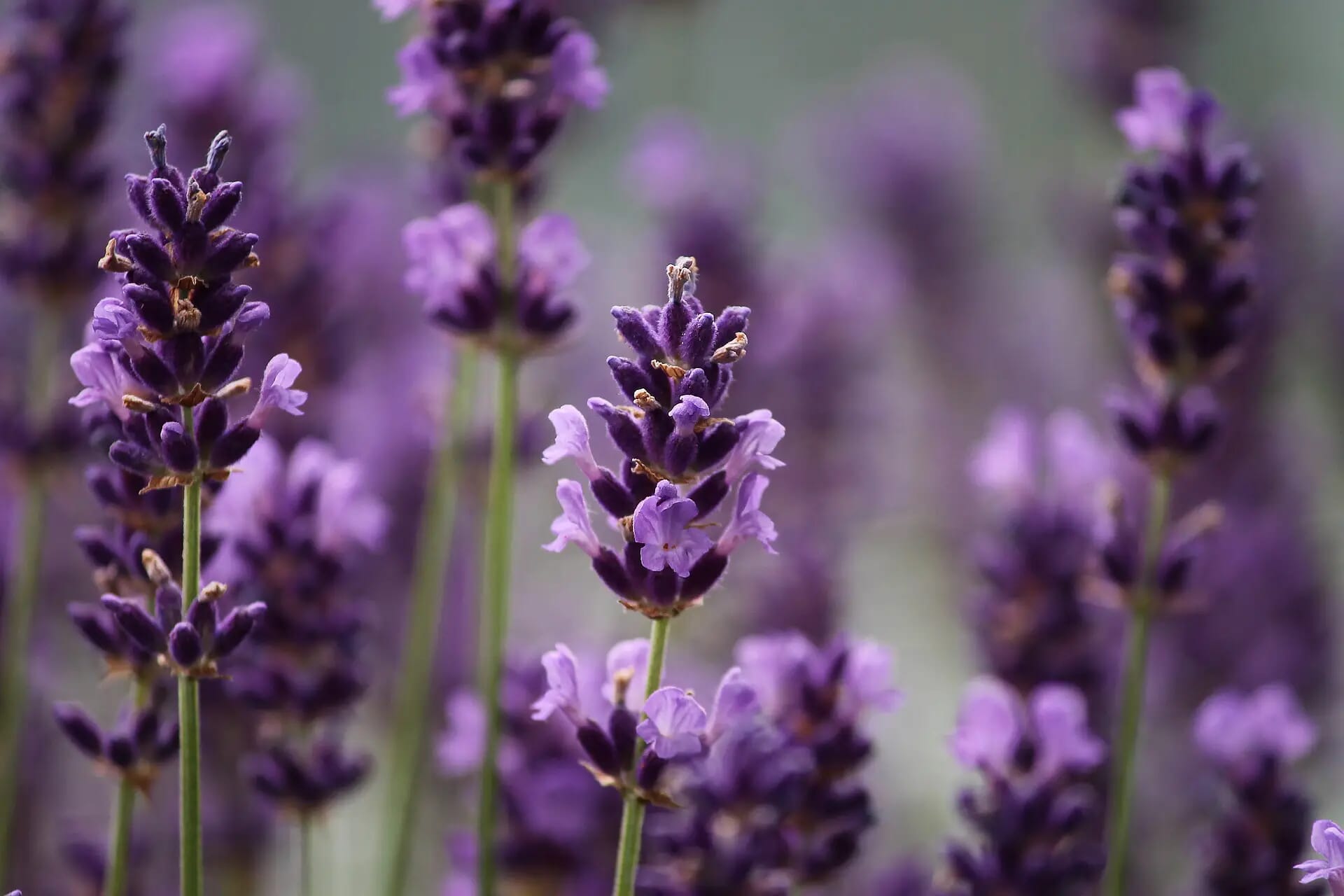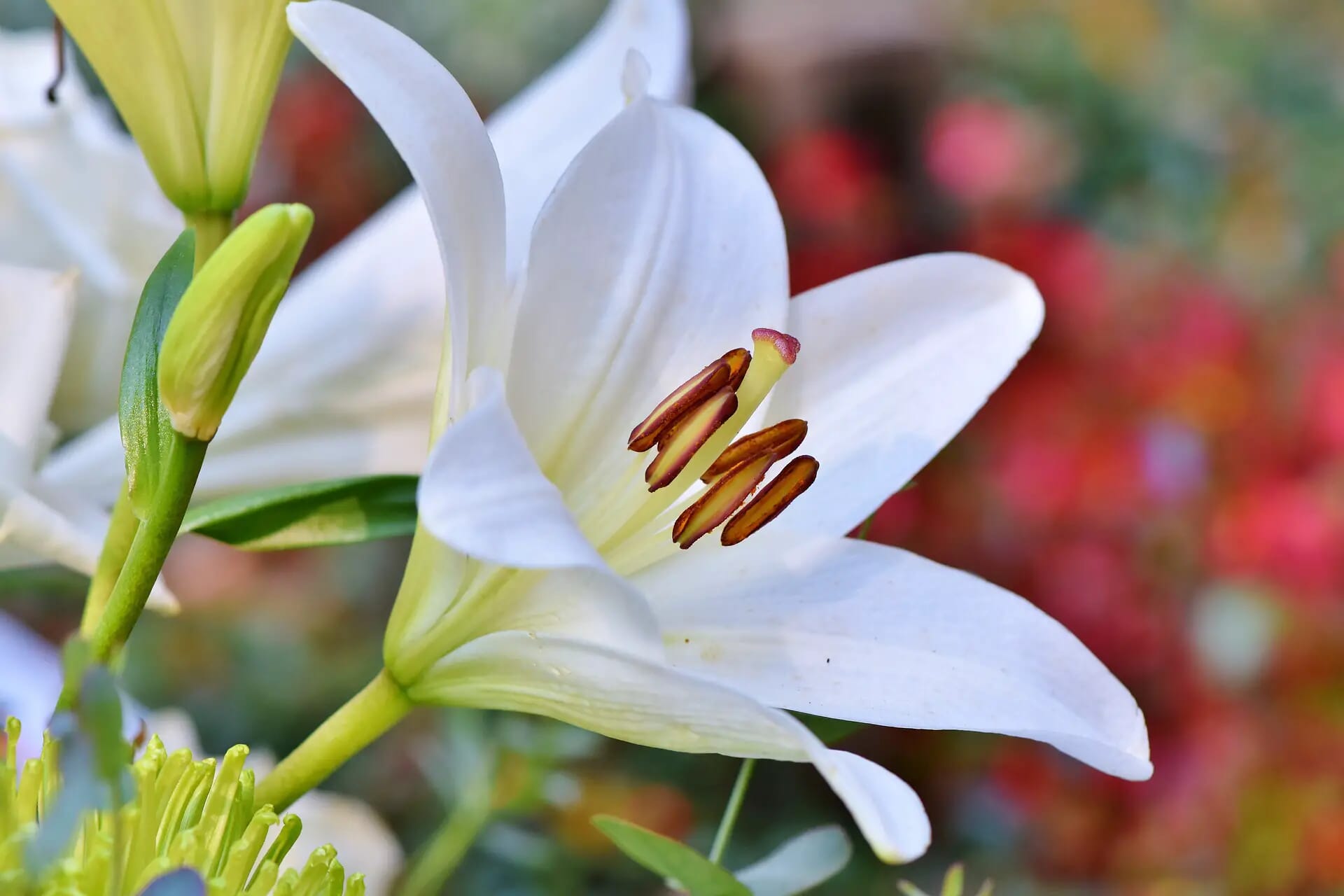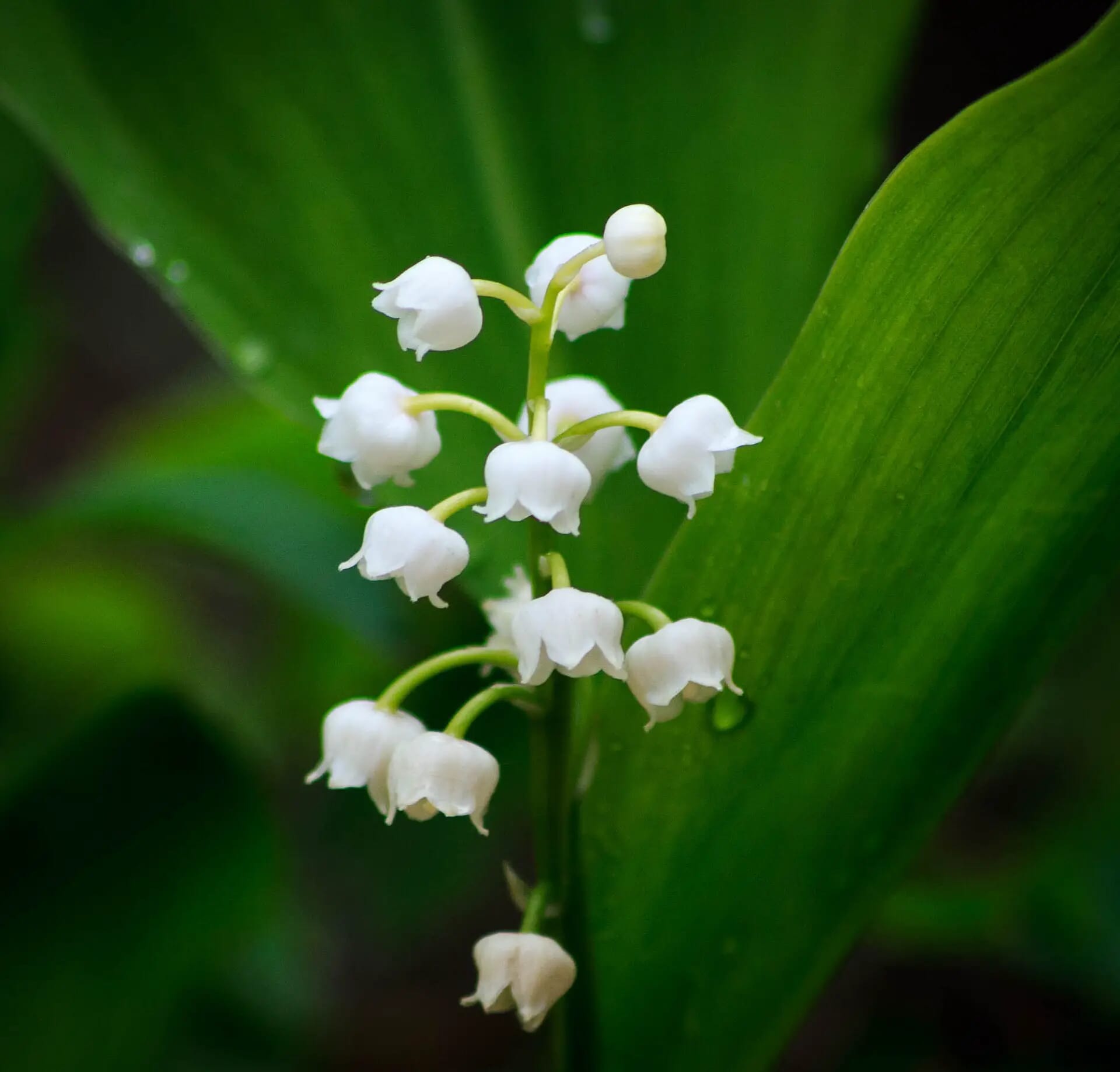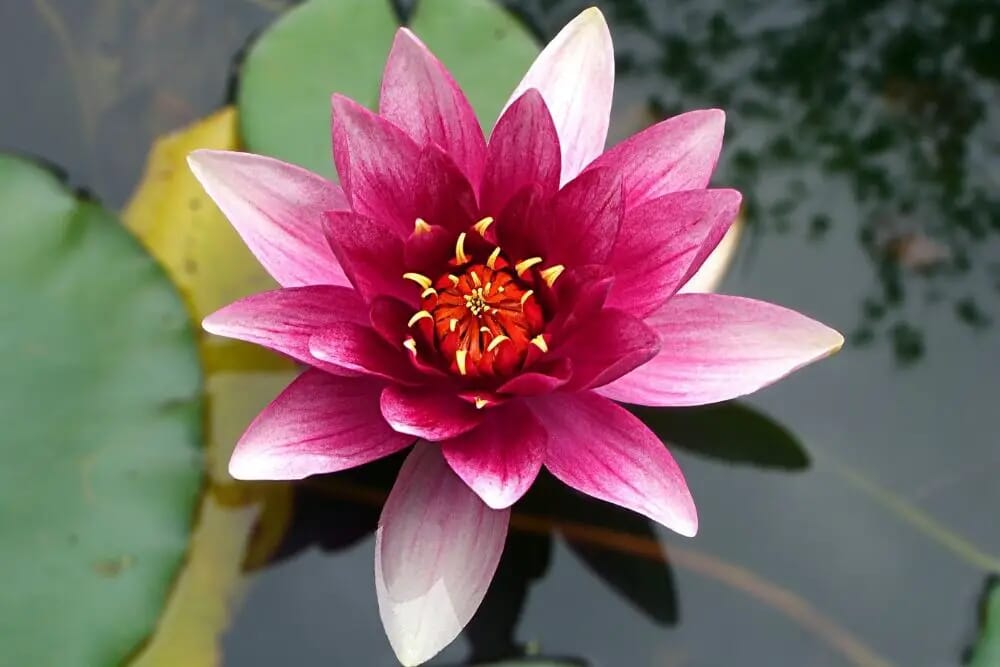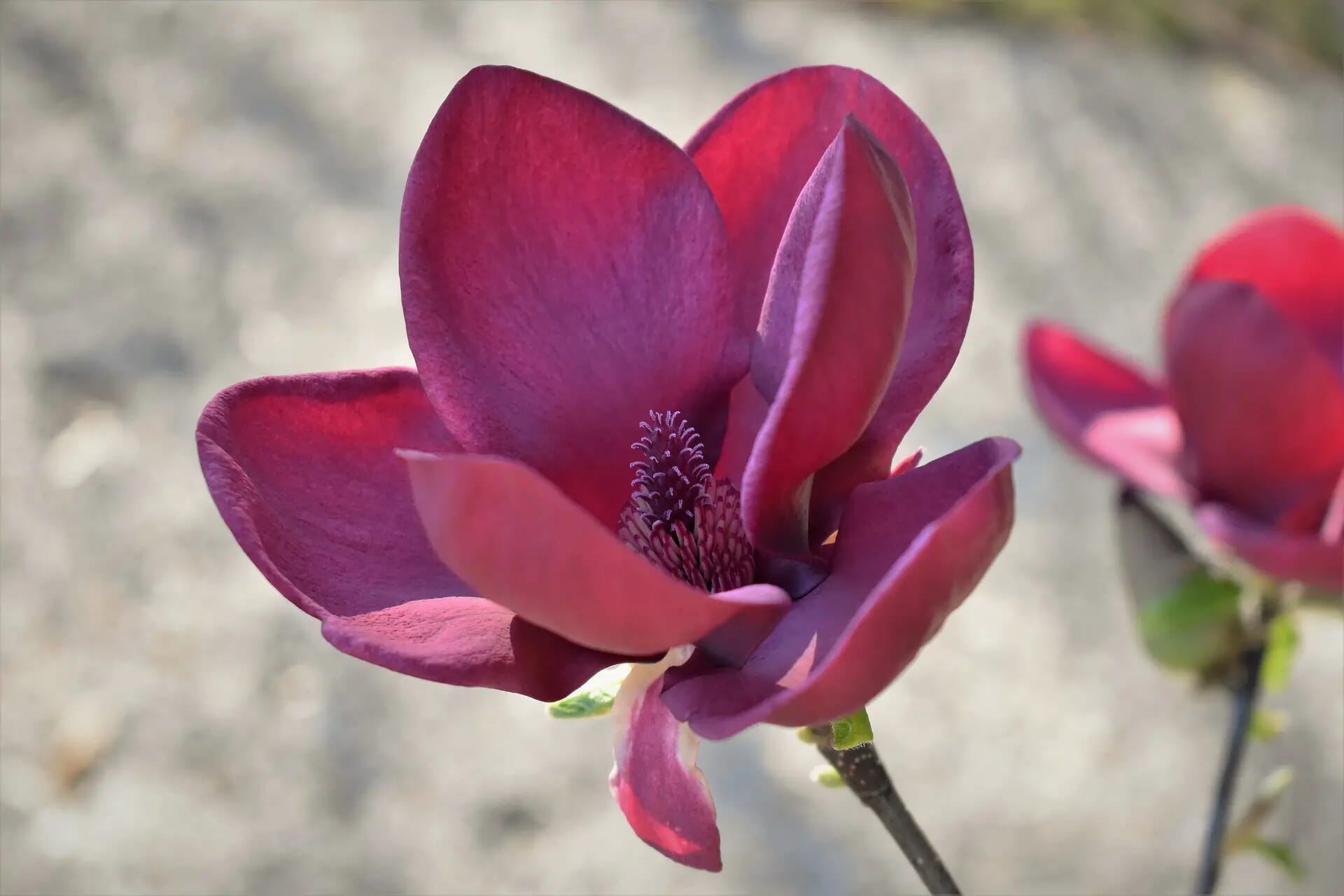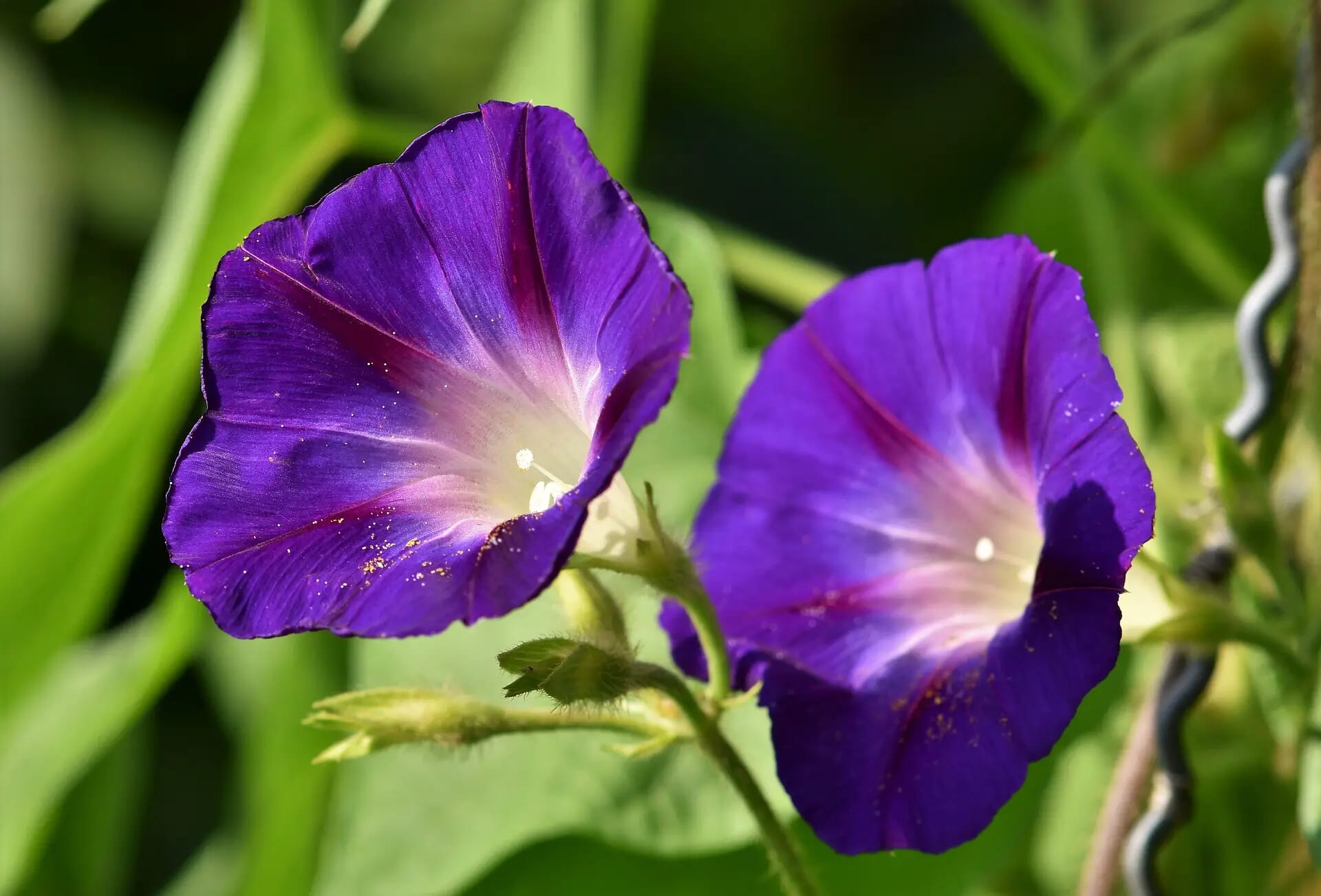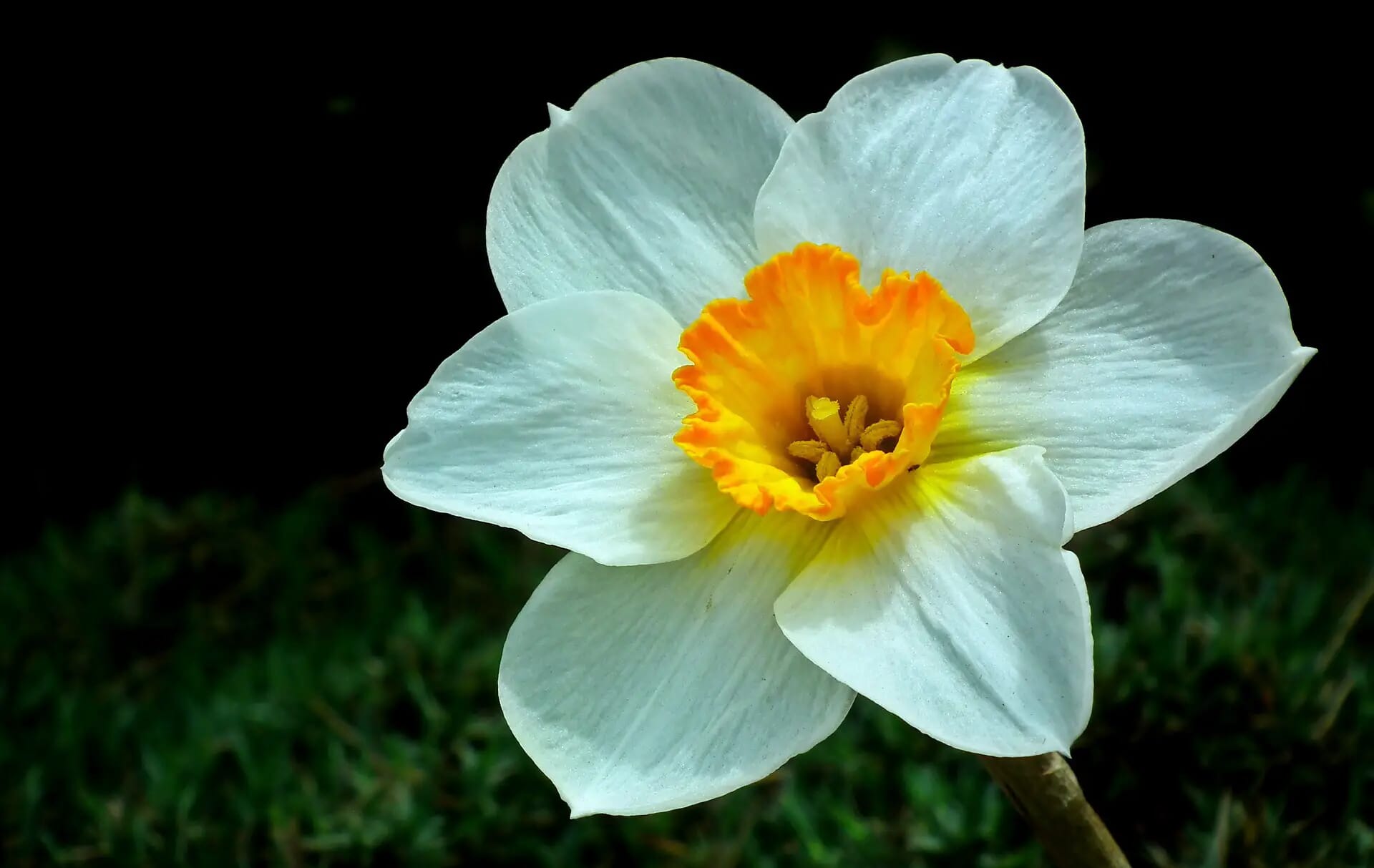Last Updated on January 5, 2024
Hello, dear readers, and welcome to an enchanting journey through the world of heather flowers.
In this blog, we’ll explore the captivating meanings, profound spiritual symbolism, and the subtle language of colors that the heather flower uses to communicate.
Heather may seem unassuming at first glance, but beneath its delicate appearance lies a wealth of significance and cultural importance that has spanned centuries.
Join me as we uncover the hidden messages and stories woven into the tapestry of heather blooms.
As we dive into the world of heather, we’ll unravel the various cultural connections and delve into the intricate meanings that this unassuming flower carries.
Whether you’re seeking to understand the symbolism of heather, its historical context, or its significance in various cultures, this journey will offer insights and a deeper appreciation for the beauty of this humble yet extraordinary bloom.
The heather flower, with its rich tapestry of meanings, invites us to explore the nuanced language of nature. So, let’s embark on this enlightening journey and unravel the secrets held within the petals of the heather flower.
Key Takeaways
- Symbolism of the Heather Flower: Heather symbolizes good luck and resilience, with a rich cultural history, especially in Victorian England, where it was rare and considered fortunate.
- Colors and Symbolic Meanings: Purple Heather signifies admiration and independence, while pink and white variations represent romantic love, femininity, purity, and protection from negativity.
- Cultural Significance: Scotland sees Heather as a national symbol, while Celtic traditions link it to healing. Queen Victoria’s influence popularized it in England during the 19th century.
- Literary and Artistic Symbolism: Heather holds diverse meanings in literature, symbolizing love, Scottish identity, nature’s beauty, simplicity, and mysticism, creating emotional resonance.
Etymological Meaning Of The Heather Flower
The names ‘Heather’ and ‘Ling’ have interesting etymologies. Unlike many plant names derived from Latin roots, these names originate from the British Isles and Northern Europe.
- ‘Heather’: In Old English, it was ‘hædre.’ Over time, it merged with related Scottish and English terms (‘hathir’ and ‘heath’) and became ‘heather’ by the 16th century.
- ‘Ling’: The term likely comes from elements used as modifiers in Old English and Germanic languages. In Norse languages, ‘ling’ referred to something of diminutive status, fitting for the small, low-growing ling plant.
These etymological shifts reveal the historical influences and linguistic evolution that shaped these names.
RELATED: Carnation Flower Meaning, Spiritual Symbolism, Color Meaning & More
Symbolism Of The Heather Flower
| Symbolism | Significance |
| Good Luck | Rare, Considered Lucky in Victorian England |
| Resilience | Thrives in Harsh Conditions, Symbol of Perseverance |
| Mystical | Linked to Supernatural Forces in Celtic and Gaelic Cultures |
Heather often is a sign of good luck and fortune in Victorian England. It was at that point quite rare to find it outside of Scotland and Northern England.
Rare very much in the way that people viewed the four-leaf clover as a lucky symbol today.
The heather plan has also been a symbol of perseverance, resilience, strong will, and independence for hundreds of years.
RELATED: Chrysanthemum Flower Meaning, Spiritual Symbolism, Color Meaning & More
Perhaps this is due to it being able to survive in conditions that would likely damage or kill other plants. Meanwhile heather can grow and thrive in these isolated places.
Heathers are also popular symbols of history, heritage, and legends in the British Isles. Many stories from the rural parts of the island have referenced this small plant throughout history.
It is for these reasons, and its abundance in Scottish highlands, that this plant would become very popular in Scottish literature. A topic that we will go into more detail about later.
They are also symbols of mystical, supernatural forces in some places across the United Kingdom. Celtic and Gaelic culture, like the clover, often tied it to signs of the fae being present in the area.
Unlocking the Symbolic Colors of Heather Flowers
| Flower Color | Symbolic Meanings |
| Purple | Admiration, Independence, Solitude |
| Pink | Romantic Love, Passion, Femininity |
| White | Purity, Good Fortune, Protection from Negativity |
| Red | Rare, Associated with Blood, Ill Omen |
Although they grow around the world, heather plants primarily grow in two different colors. Purple and white, with varying shades of pink between the two.
Over the years, these colors obtained a wide range of meaning and symbolism attached to them.
Purple Heather
- Common color symbolizing admiration, both platonic and romantic.
- Associated with independence and solitude due to its historical rarity.
Pink Heather
- Less common than purple.
- Symbolizes romantic love, passion, and femininity.
- Can also be seen as a symbol of evil omens in folklore, linked to the idea of fallen blood.
White Heather
- Another common color.
- Symbolizes purity of heart and body.
- Gifting white heather expresses good fortune and protection from negative energies.
Red Heather
- Extremely rare and associated with blood.
- Linked to themes of death and loss, more so than pink heather.
- Considered an ill omen; bringing it indoors may lead to disaster and misfortune.
RELATED: Clematis Flower Meaning, Spiritual Symbolism, Color Meaning & More
Meaningful Botanical Characteristics Of The Heather Flower
Heathers is an evergreen flowering plant, meaning that their growth does not wilt or wain through the seasons, and will continue to stay green and active throughout their life.
Their continuous activeness throughout the year is an adaptation that allows them to function in soil that would otherwise be too poor in quality for them to survive in.
Despite what the soft, delicate leaves and flowers would have you believe of the plant, the stems and base of heather are actually very woody and tough, helping them survive and thrive in the cold areas where it traditionally grows, as well as resistant to freezing temperatures that are possible in the winter.
This toughness reflected in even the more delicate parts of the plant as well. The leaves, for example, are very small and curl at the edges. These adaptations are vital to avoiding the high and cold winds of the highlands where these plants are.
Heather is a plant that favors much more acidic conditions than many other plants, especially in soils that are of much lower quality than plants typically tend to grow in.
Because of this, and the fact that they grow back fairly quickly if a fire has recently decimated an area means that heathers are actually an invasive species in many of the countries where they currently grow.
In New Zealand, for example, they considered this plant a weed in many natural reserves. Especially in Tongariro National Park, where they are currently outcompeting, outgrowing, many of the native plant species in the area.
Special Occasions For The Heather Flower
| Occasion | Significance |
| Weddings | Adds Rustic Element to Bouquets |
| Jewelry and Decor | Popular in Jewelry and House Decorations |
| Get-Well Gifts | White and Yellow Heather Signify Good Luck |
| Funerals | White Heather as a Sign of Respect and Love |
Heather is a popular plant to have as part of the bouquet at a wedding, especially in places and communities of Gaelic and Scottish heritage.
A stalk of white, pink, or purple heather to the flower arrangement is a simple addition that will add a rustic element to any occasion.
Heather is also a popular plant and flower to incorporate into jewelry and house decorations.
A heather terrarium is a beautiful gift to give someone on any special occasion, whether as a birthday or wedding gift or as something to offer someone if they are currently unwell and are recovering.
If you are wondering what colors would be the most appropriate as a good get-well-soon gift, remember that white and yellow heather is a sign of good luck. So, make sure to keep those in mind when picking your flowers.
Many also used white heathers as grieving or mourning flowers, due to their ties to Scottish-Gaelic folklore.
They are a sign of respect and love for those who are no longer with us, and so are usually appropriate for a funeral, although we would advise avoiding using yellow or red heather for this occasion unless the loved one or their family specifically requests it.
RELATED: Buttercup Flower Meaning, Spiritual Symbolism, Color Meaning & More
The Cultural Significance of Heather Flowers
| Culture | Significance |
| Scotland | National Flower, Symbol of Scottish Heritage |
| Celtic | Ties to Celtic Traditions and Healing Properties |
| England | Queen Victoria’s Influence, Romantic Symbolism |
| Ireland | Symbol of Good Luck |
| Norse | Sign of Protection and Luck |
| Native Am. | Medicinal Uses in Native American Tribes |
Heather flowers hold different cultural significance in various parts of the world. Here are some notable interpretations:
Scotland
- National Flower: Heather is one of Scotland’s national symbols, along with the thistle.
- Symbol of Scotland: It is deeply rooted in Scottish culture and folklore.
- Romantic Associations: Purple heather symbolizes admiration, and white heather represents good luck and protection.
- Mythical Origins: Purple heather was believed to have obtained its color from the blood of fallen Picts.
Celtic Culture
- Celtic Heritage: Heather has strong ties to Celtic traditions and stories.
- Healing Properties: In Celtic herbal lore, heather was used for its potential medicinal properties.
England
- Queen Victoria’s Influence: Queen Victoria’s love for Scottish culture and folklore popularized Heather in England during the 19th century.
- Romantic Symbolism: Heather became a favorite among romantics in Victorian England for the symbolism it carried.
Ireland
- Symbol of Good Luck: White heather is considered a symbol of good luck in Ireland, as well as in Scotland.
Ancient Greece
- In ancient Greece, Heather was associated with the goddess of love, beauty, and desire, Aphrodite. It was believed to bring good fortune and love.
Norse Culture
- Heathenry: Heather held significance in Norse Heathenry as a symbol of protection and luck.
Native American Culture
- Medicinal Uses: Some Native American tribes used heather and other plants from the Ericaceae family for their medicinal properties.
Modern Symbolism
- In modern times, Heather is often associated with admiration, good luck, protection, and love in various cultures.
Intriguing Facts About Heather Flowers
- Heather plants can live for up to 40 years in some cases.
- Although the plant is evergreen, heather flowers tend to bloom in the Northern Hemisphere between July and September, at the height of summer.
- Heather does not start to blossom until they are at least 4 years old after they have sprouted from the ground.
- They will continue to produce flowers until they are approximately 15 years old.
- Heathers are a vital part of many highland animals’ diets. Sheep, goats, and deer, both wild and domesticated, feed on heather, especially in winter, when their usual grass food is buried under ice and snow.
- Several species of grouse that live in heathlands and highlands, such as the red and willow grouse, will also feed on the young shoots of these plants.
- Heather is also vital to the survival of various species of insect, including many pollinators. Bees are actually able to make honey from the nectar that this plant produces.
- The heather beetles consume vast amounts of heather in the wild and are actually quite devastating when they are in large enough numbers.
- They are one of the species that often helps stop the spread of heather plants into larger territories, and have been useful for clearing out the plant where it is considered invasive, such as in New Zealand.
RELATED: Columbine Flower Meaning, Spiritual Symbolism, Color Meaning & More
Practical and Artistic Uses of Heather Flowers
As we have already stated, heather is a vital food source for many animals that live in highlands during snowier periods of the year, as few types of grass can reach above the snow line.
For people, heather has been used in a wide range of processes for years. Heather used to be used to make dyes for clothing and fabrics, both for yellow and purple/pink coloring.
Before the adoption of hops, heather would be used in malting processes to help make beers, although this fell out of fashion once hops became widely used in the fermenting process.
Heather honey is also made by honeybees from the nectar it produces. Unlike many other kinds of honey, they have a relatively thick texture most of the time, forming almost a jelly when undisturbed.
Stirring heather honey will make it more like other honey for a short period, turning it into more of a syrup, but will return to its more solid form after enough time has passed.
Heather is used to making wooden/vegetative jewelry. The stem of the heather plant can be molded and shaped, before being hardened in resin, to make a rustic-looking decorative piece. This is not widely practiced outside of Scotland, however.
Symbolism Of A Heather Flower Tattoo
Because of their popularity in Scotland, a heather tattoo is often a way of someone symbolizing their ties to the country, either through living there or through ancestral heritage.
Heathers is also a tough plant, and are symbols of resilience. A person who has been through a great ordeal and come out the other side of it may want to commemorate the occasion by having a symbol of endurance tattooed onto them.
Heather tattoos are very common for that reason.
Heathers are also admired for their simplistic aesthetic and are typically tied to signs of admiration. A person might wish to have a tattoo of heather if someone they or someone they know loves heather flowers, as a token to them.
Their relatively simple design, a thin stalk with purple highlights, makes them a popular choice for smaller designs as well as people’s first tattoo that they want to be simple to avoid comfort, whilst still carrying something of meaning to them.
Meaning On Heather Flower In Arts And Literature
Heather flowers have held various meanings in arts and literature over the years, often symbolizing a range of sentiments and themes:
Romanticism
Heather is frequently associated with themes of love, romance, and admiration in literature. It is used to convey deep affection and devotion between characters or lovers.
Scottish and Celtic Identity
In Scottish and Celtic literature, Heather is a symbol of national identity and cultural heritage. It is used to evoke a sense of place and tradition.
Nature and Wilderness
Heather’s presence in literature often represents the natural world, specifically rugged landscapes and untamed wilderness. It can symbolize the beauty and resilience of nature.
Simplicity and Humility
Heather’s modest appearance and ability to thrive in challenging environments can be seen as a symbol of simplicity, humility, and strength in literature.
Mysticism and Folklore
Heather is sometimes associated with mysticism and folklore in literature. It can be linked to ancient legends, myths, and magical qualities.
Love and Good Fortune
White Heather is used to symbolize love and good fortune in various literary works. It is often given as a token of affection and well-wishes.
Symbol of Hope
In some writings, Heather is a symbol of hope and renewal. Its blooming in late summer and early autumn is seen as a sign of optimism and new beginnings.
Regional Setting
In novels and stories set in Scotland or the heathlands, Heather serves to create a vivid sense of place and atmosphere, immersing the reader in the setting.
Contrast and Foreshadowing
In literature, the contrast between Heather’s rugged beauty and harsh environment can be used to foreshadow events or symbolize the challenges characters face.
Emotional Resonance
Authors use Heather’s symbolism to evoke strong emotions and create a connection between readers and the characters or settings in their stories.
Conclusions
As we can see, the heather plant is a beautiful, hardy plant, and has come a long way from just being viewed as another plant of the cold unforgiving countryside, and a sign of rustic peasants.
They are symbols of a small, yet tough flower, that can grow where no flower has grown before.
We hope that you have learned something from this guide that has helped you appreciate this moor-bound flower a little more in your life.
RELATED: Cornflower Meaning, Spiritual Symbolism, Color Meaning & More
Frequently Asked Questions
What does purple Heather symbolize?
Purple Heather is commonly associated with admiration and is often seen as a symbol of respect and acknowledgment for someone.
What is the significance of white Heather?
White Heather symbolizes good luck and protection. It’s often given as a token of good fortune and a wish for the recipient’s well-being.
Why is Heather significant in Scottish culture?
Heather is a national symbol of Scotland and is deeply rooted in Scottish culture and folklore. It represents admiration, independence, and love.
Is Heather associated with any myths or legends?
Yes, in Pictish mythology, it is believed that purple Heather obtained its color from the blood of fallen Picts. There are also legends, such as the story of Malvina, connected to white Heather.
What role did Queen Victoria play in popularizing Heather in England?
Queen Victoria’s appreciation for Scottish culture and folklore elevated Heather’s status in England during the 19th century. She made it a favorite among the upper classes, particularly romantics.
Are there cultural variations in the symbolism of Heather flowers?
Yes, the symbolism of Heather can vary from one culture to another. In Ireland, white Heather symbolizes good luck, while in ancient Greece, it was associated with love and good fortune.
Can Heather flowers be used as gifts with symbolic meaning?
Yes, Heather flowers, particularly white Heather, are often given as gifts to convey well wishes, protection, and admiration for someone.
Are there any medicinal or practical uses associated with Heather?
In some cultures, Heather has been used for its potential medicinal properties. It has been used in traditional herbal remedies for various purposes.
Is there a specific season when Heather is in bloom?
Heather typically blooms in late summer and early autumn, adding vibrant color to landscapes during the colder months.
What are the general modern interpretations of Heather flower symbolisms?
In modern times, Heather is often associated with qualities like admiration, good luck, protection, and love in various cultures.
- Aconite Flower Meaning, Spiritual Symbolism, Color Meaning & More - February 15, 2022
- Acacia Flower Meaning, Spiritual Symbolism, Color Meaning & More - February 15, 2022
- Amaryllis Flower Meaning, Spiritual Symbolism, Color Meaning & More - February 15, 2022

